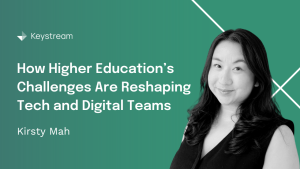17.04.2025
Whatever you do, don’t wait, instead seize the moment!
Embracing the moment can be tricky for the public sector. With business-as-usual firefighting, multiple change projects on the go at any point in time, and major infrastructure programmes taking place all under the same organisation, navigating all of this is no small feat. So how do clients make sense of it all in a coherent manner to be able to “see the wood through the trees” and enact structured and sustainable transformation?
We are currently supporting one of our clients in the North West, part of the New Hospital Programme (NHP), with this exact problem. Whilst their new hospital will not be completed for another c.5+ years, we are helping them to make the most of this time to develop their multi-year, multi-faceted transformation roadmap. The aim is to “right-size” the organisation ahead of receiving the smart building and seize the moment as a great catalyst for change.
Even though this example is NHP-related, the simple key steps outlined below are relevant to the wider NHS and public sector more generally:
- Get visibility – Understand all the projects and programmes already mobilised within your organisation. Identify any “pet projects” which need to be addressed, reviewed, and prioritised against more formal programmes. Encourage buy-in and engagement from your organisation in a “project amnesty”, where everything can be collated centrally. It is important to position this as a benefit to the organisation, as opposed to catching people out.
- Accurately assess maturity – Review the maturity of each programme in terms of governance structures, documentation, delivery timelines, and risks. Consider whether you also need to review these programmes for their digital maturity too, i.e. are programmes taking full advantage of technological developments?
- Identify and review the benefits cases – As I said previously, “catch them all”. Work across each programme to map and understand the benefits and align these with the business cases, strategic objectives, transformation levers, and demand and capacity modelling. In doing so, you can identify a heatmap showing where you are making positive progress, and equally, where you may have some gaps to address.
- Mitigate the gap – Following on from the previous step, where you have gaps, what are you doing to close them? Engage your teams and external partners to consider ways to close the gap in a way that allows you to explore genuine change and transformation, as opposed to “more of the same”. This exercise gives you a real chance to change the way you and your teams work.
Creating a single version of the truth helps provide clarity across the organisation, from the executive floor to frontline services. Everyone can see what the organisation is and is not committing to, and importantly, who is delivering each of the programmes. This does not mean that the transformation roadmap cannot change. It should be considered a “live” plan, supported with the appropriate governance framework to review programmes, re-prioritise, and, if necessary, de-scope programmes as new information comes to light.
In doing so, organisations can accurately assess the scale of the change required to meet and surpass benefits identified at the start of a programme, and outline the workforce capacity and capabilities required to deliver the roadmap. In some instances, it might also present an opportunity to review the transformation team structure, particularly where activity is fragmented across different pockets of the organisation.
It might feel uneasy. It might be agitative. It might be difficult. But by taking these steps, organisations can stitch themselves together with real clarity and coherence. They can understand what they are doing, what benefits they unlock, and how they genuinely transform from where they are today to (and hopefully beyond) something as major as a new hospital.
It might even help to extinguish all the daily fires…

